This is a collection of more than 2,000 fossil samples being displayed at the exhibition “Fossils – A journey to discover the origin of life on Earth” held for the first time in Vietnam within the framework of Hue Festival 2022.
The exhibition was organized by the Hanoi Fossil Museum in collaboration with the Hue Monuments Conservation Center at the Nguyen Dynasty relics (76 Han Thuyen, Hue City), attracting the attention of a large number of people and people. traveler.
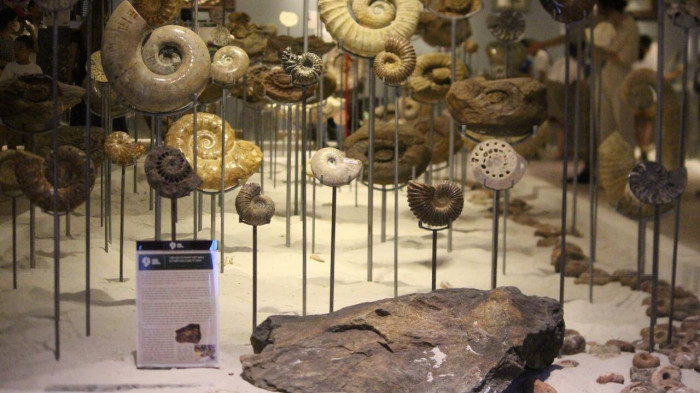
The stone block is 2,936 billion years old, belonging to the Mesoarkean era – the oldest stone block in Vietnam, at the exhibition
Prof. Dr. Ta Hoa Phuong, Chairman of the Vietnam Association of Paleontology and Stratigraphy, said that each fossil specimen collected contributes to enriching humanity’s understanding of the biological world that has existed in history. Earth history.
This fossil exhibition of the Hanoi Fossil Museum is an opportunity to give the community a correct view and useful sources of knowledge in the field of paleontology.
The original specimens at the exhibition were collected from many countries and in many localities in Vietnam. The exhibition “Fossils – A journey to discover the origin of life on Earth” brings exciting surprises. inform visitors about the natural history of the earth spanning hundreds of millions of years through fossil artifacts; about the birth, evolution and demise of many species of creatures that existed hundreds of millions of years ago.
One of the “highlights” at the exhibition is a rock dating back 2.936 billion years, found by Associate Professor Dr. Tran Ngoc Nam, former Dean of the Department of Geography and Geology of the College of Sciences – Hue University at Hue University. Hung Khanh waterfall, Tran Yen district, Yen Bai province (belonging to Con Voi mountain range).
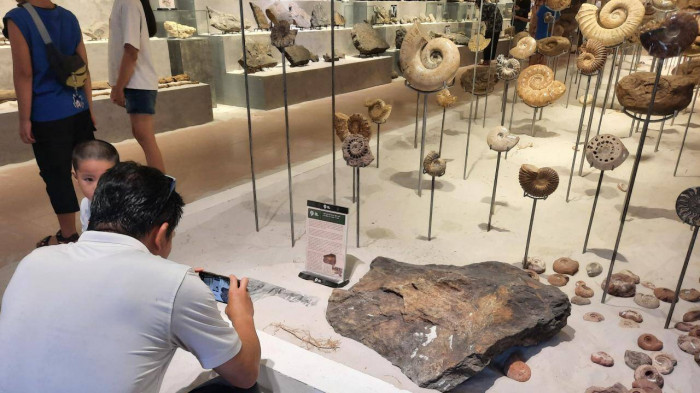
Tourists meticulously took pictures of a 2.936 billion year old stone block found in Vietnam
To be able to accurately determine the age of this “oldest stone in Vietnam”, Associate Professor. Dr. Tran Ngoc Nam took zircon crystals from the rock and brought them to a modern laboratory in Japan to determine the absolute age using U/Pb isotope analysis.
From experimental results, it has been shown that this rock is 2,936 billion years old, belongs to the Mesoarkean era – becoming the oldest rock block in Vietnam.
“This block of rock was brought from the Hung Khanh waterfall mentioned above, has gone through many tectonic cycles, many large and small mountain-building phases, and has been a “witness” of the history of the development of the biological world, from single organisms. original microscopic size, to the giant beasts that once dominated the planet throughout the long history of nearly 3 billion years of today’s S-shaped country” – information about the oldest stone in Vietnam Nam mentioned above at the exhibition.
The exhibition will take place in Hue until October 31, 2022.
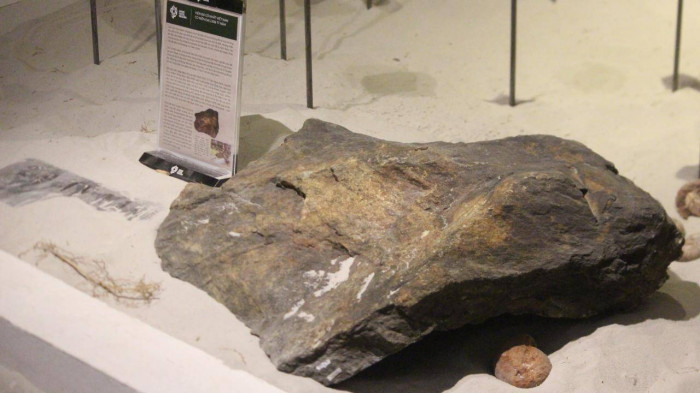
Close-up of a stone block dating back 2,936 billion years in Vietnam
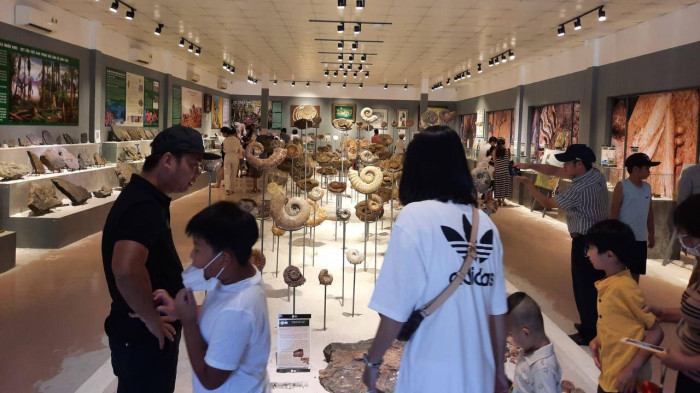
The oldest stone block in Vietnam is located in the central area of the exhibition, next to it is a chrysanthemum…
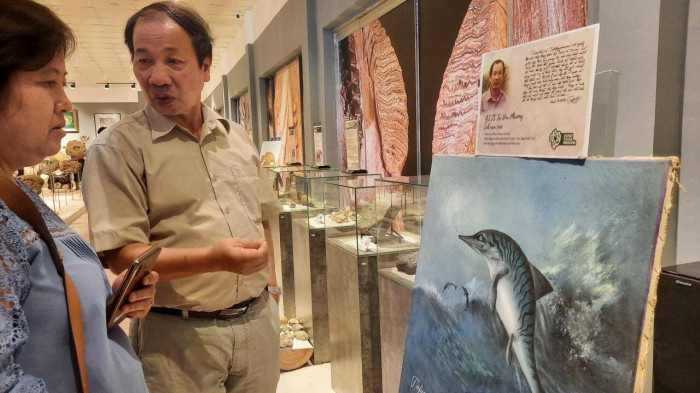
Prof. Dr. Ta Hoa Phuong, Chairman of the Vietnam Association of Paleontology and Stratigraphy, shared about “Ichthyosaurs”
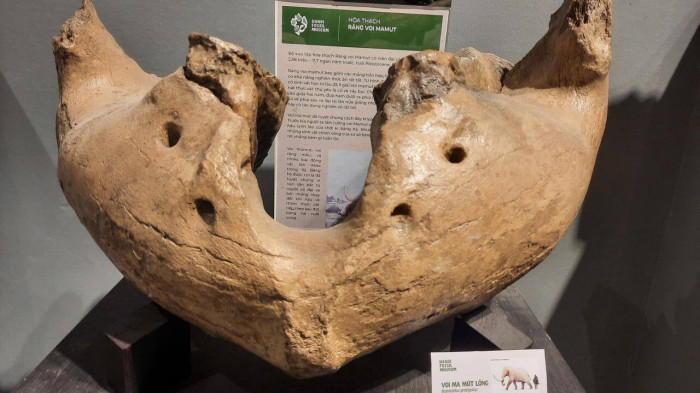
Specimen of Woolly Mammoth
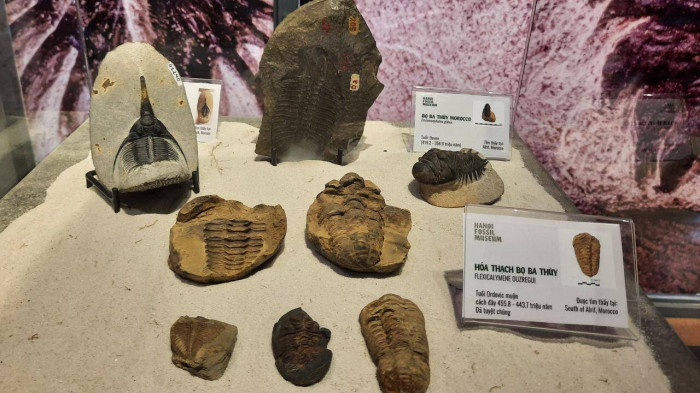
Trilobite fossil…
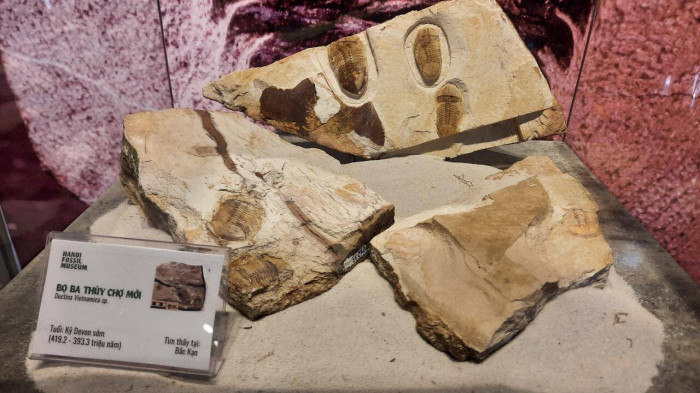
New Market trilobites
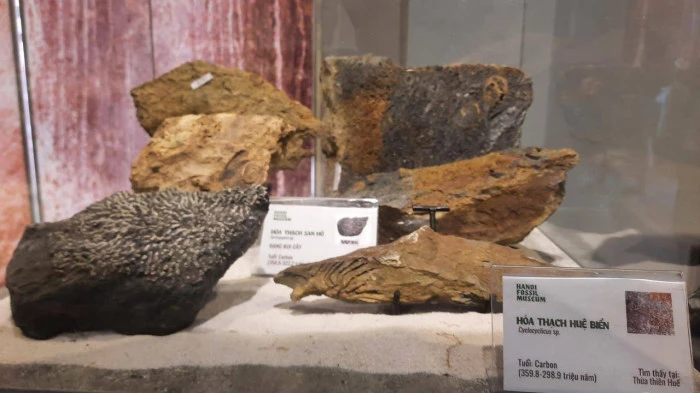
Fossils of corals and sea lilies
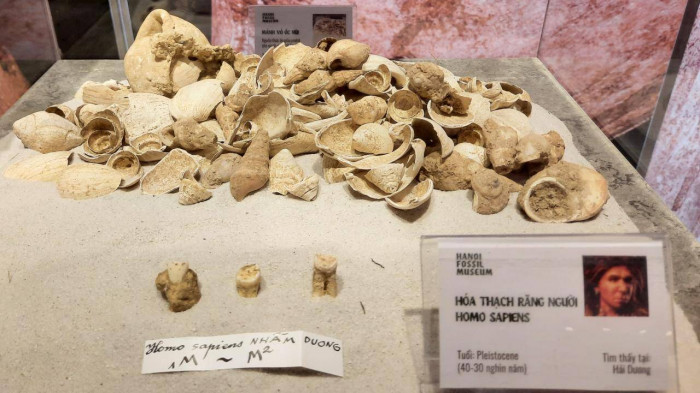
Fossil human teeth
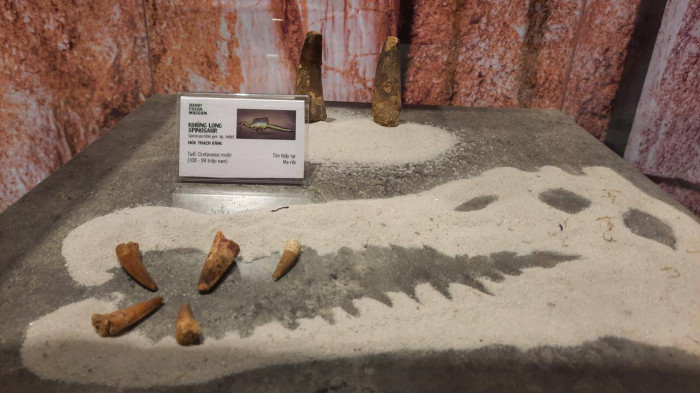
Spinosaur dinosaur tooth fossils found in Morocco
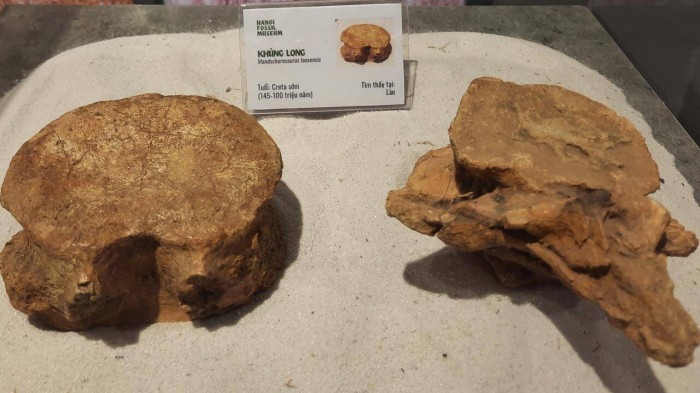
“Dinosaurs” found in Laos
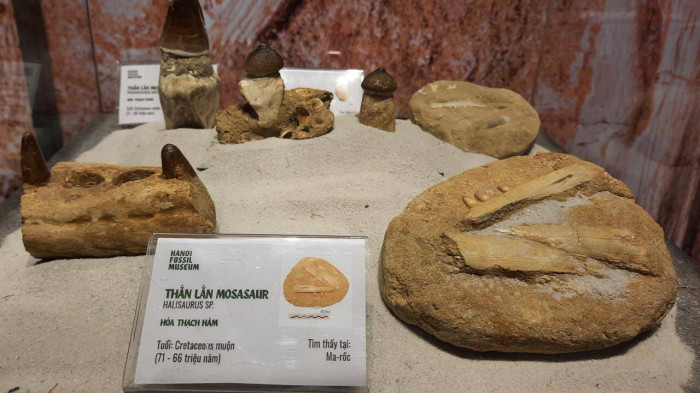
Mosasaur lizard fossil
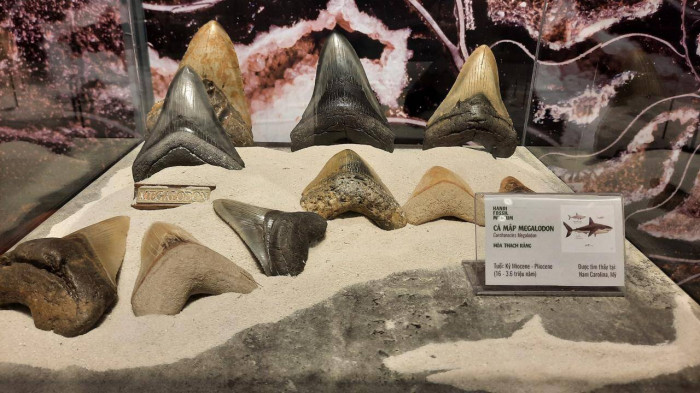
Megalodon shark tooth fossil
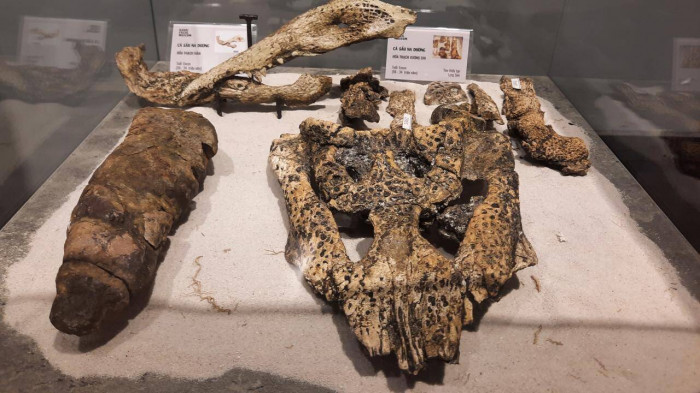
Jaw fossils, fossil bones of Na Duong crocodile limbs
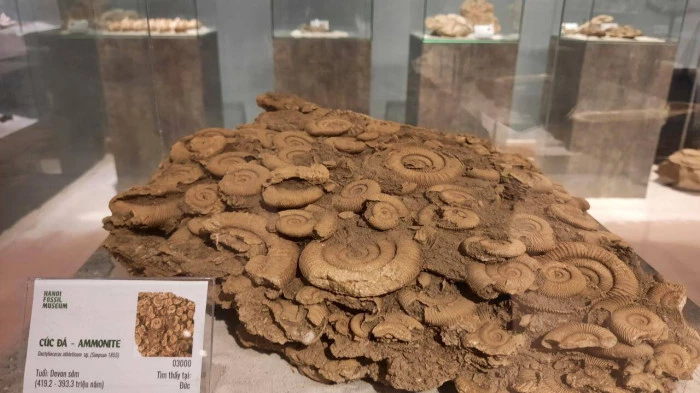
Ammonite – Ammonite
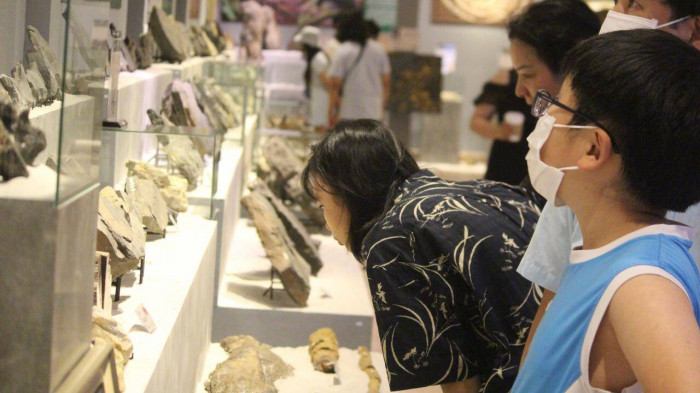
Visitors attentively learn about fossil specimens
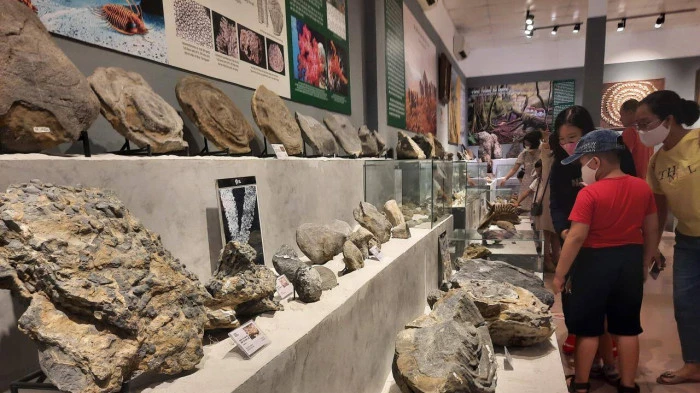
The exhibition brings interesting surprises to visitors about the natural history of the earth spanning hundreds of millions of years through fossil artifacts; about the birth, evolution and demise of many species of creatures that existed hundreds of millions of years ago
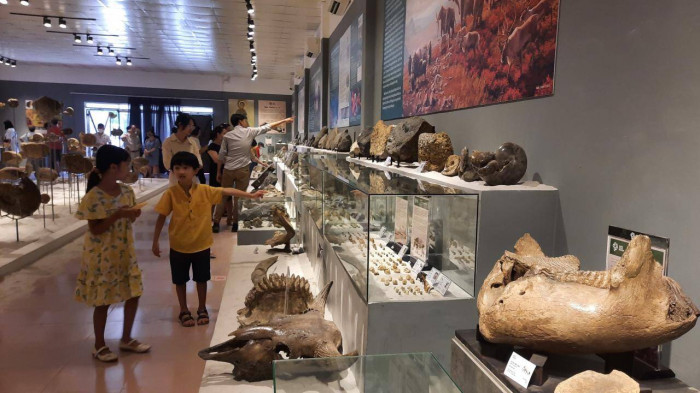
The exhibition attracts many visitors and children…





